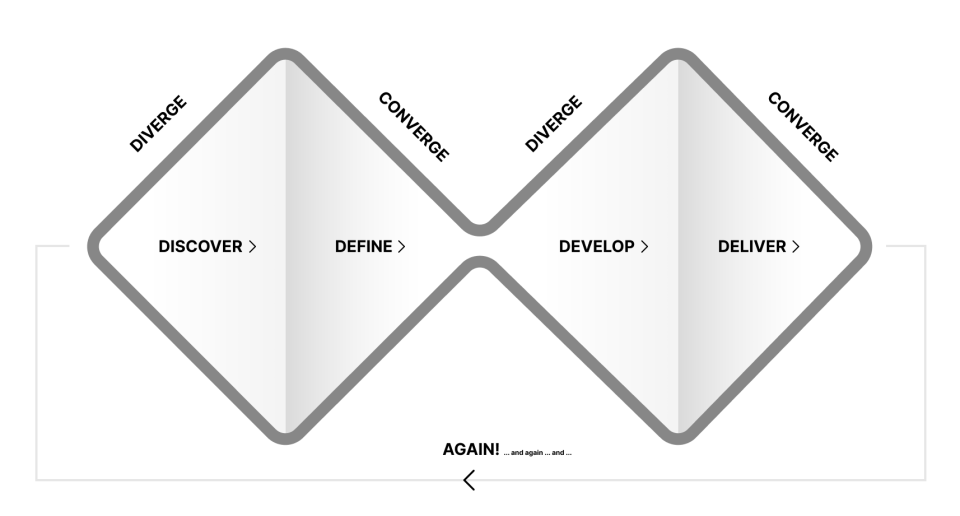In the contemporary landscape where the customer is king, Service Design has emerged as a critical foundation for enterprises looking to distinguish their services and surpass customer anticipations. A crucial model that often takes the limelight in Service Design is the Double Diamond, a concept that structures the creative journey and stimulates innovation. This piece explores the ins and outs of the Double Diamond method, its stages, and why it's essential in Service Design.
Double Diamond provides a structured, creative process for problem-solving in Service Design.
The model promotes user-centricity, exploration, and risk mitigation.
Versatile across industries, it ensures consistent delivery of impactful services.
Decoding the Double Diamond Model
Formulated by the British Design Council in 2005, the Double Diamond model demonstrates the design pathway. It consists of four unique stages—Discover, Define, Develop, and Deliver—sketching out a distinct roadmap for addressing intricate problems and designing effective service answers.
The model earns its name from the configuration created by the process flow, echoing two diamond shapes. The initial diamond represents the space for the problem, focusing on comprehending the issue and the requirements of the users. The latter diamond symbolizes the space for the solution, aiming to generate and polish the solution.
Stages of the Double Diamond Model
Discover: This is the first divergent phase of the initial diamond, with the objective of accumulating insights. It involves comprehensive research to understand the customer's needs, behaviors, and the context of the problem.
Define: This is the convergent phase of the first diamond, where the insights from the discover phase are collated and used to clearly delineate the problem.
Develop: This is the first divergent phase of the second diamond, where various solutions are ideated and prototyped. The emphasis here is on nurturing creativity and openness to diverse possibilities.
Deliver: This is the convergent phase of the second diamond, where the top solutions are tested, refined, and finalized for implementation.

Why the Double Diamond Matters in Service Design
The Double Diamond model is a powerful instrument that offers structure to the design process while encouraging original thinking and innovation. Here's why it holds weight:
Guided Creativity: The Double Diamond model navigates the design team through a systematic process while still fostering creativity and innovation.
Focus on the User: The model strongly advocates understanding the user's needs and context, enabling the creation of solutions that genuinely connect with users.
Encourages Broad Exploration: By distinctly separating the problem space from the solution space, the model ensures teams dedicate sufficient time to probe and understand the problem before transitioning into solution mode.
Risk Reduction: The model's iterative approach, with multiple rounds of testing and refinement, aids in early detection of potential issues and risk mitigation.
Adaptability: The Double Diamond model is adaptable and can be applied to a wide array of problems and sectors.
In sum, the Double Diamond model is a priceless tool in Service Design, providing a user-focused, structured, yet inventive framework to design services that truly fulfill user needs. By effectively being aware of this model, organizations can ascertain they're consistently delivering meaningful and impactful services.
Design Psychology did this great article explaining how the Double Diamond can be used to explain almost every other design model known to mankind. Remember all these models are conceptual models, meaning it's a language to explain how a design process works. Companies working with user centered design may work in different ways, but all the really strong design teams I've encountered share the same key ingredients and can all be explained with a general model like the Double Diamond
